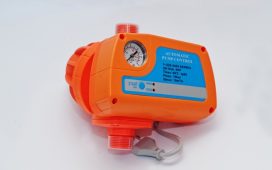A major revolution in the process analytical chemistry field occurred in 1978 when Beckman introduced the first commercial Fourier-transform infrared (FTIR) spectrometer. Since then, FTIR spectroscopy has established itself as one of the most important analytical techniques available to chemists and engineers for in situ analysis of liquid-, solid-, and gas-phase chemical systems. This article gives a brief introduction to this powerful technology.
Most people wonder what is FTIR spectroscopy. FTIR instruments is simple: The light beam from an interferometer illuminates a sample, which causes molecular vibrations within the illustrated volume to modify their dipole moment by an amount that depends on the frequency of incident light and hence on its wavelength or wavenumber. The experiment
Requires no reference whatsoever, as interference fringes are detected with a CCD camera. A microprocessor then decodes this data to give absorbance as a function of wavelength or wavenumber, which is displayed as an absorption spectrum. In FTIR spectroscopy, it is customary to plot this data against wavenumber because most vibrational transitions fall within the middle and far-infrared regions between 4000 and 400 cm -1. However, if desired, an equivalent absorption spectrum can be obtained by plotting the FTIR data against wavenumber.
The interferometer
A schematic diagram of the most common FTIR setup, which illustrates how an interferogram is generated. Here incident light from a broadband source illuminates the sample, which scatters some of this light to form two beams that are recombined at detector 1, where they interfere constructively or destructively depending on wavelength. This signal is then amplified and sent to the A /D converter, which calculates various parameters based on these signals before displaying them as an absorption spectrum. If the upper beam is used as the reference beam instead of detector 1, then no interference fringes can be seen because both beams interfere with each other destructively. However, the spectrum is usually displayed with this beam as the reference because of its higher intensity.
After passing through a series of movable mirrors (interferometer), the two beams are focused onto a sample by objective lens 1, focusing light to a diffraction-limited spot size of about one μm. The first accurate lens images both beams onto the entrance slit of monochromator 2, where it is separated into its component wavelengths according to dispersion by grating 3. At this point, one or more optical filters are often inserted after monochromator 2 to remove light of unwanted wavelengths. From here, the beams are directed onto detector 1, where their interference produces an interferogram or spectrum. The sample is placed on a motorized stage that moves in the z-direction under objective lens 1, enabling interferograms to be recorded for different spatial locations.
Movable mirror artifacts
One problem with using the movable mirrors as part of an interferometer lies in their hysteresis effects, i.e., their optical properties depend on whether they are being deflected towards or away from the incident light beam. This causes two problems – firstly, it means that there is some uncertainty about which wavelength corresponds.













